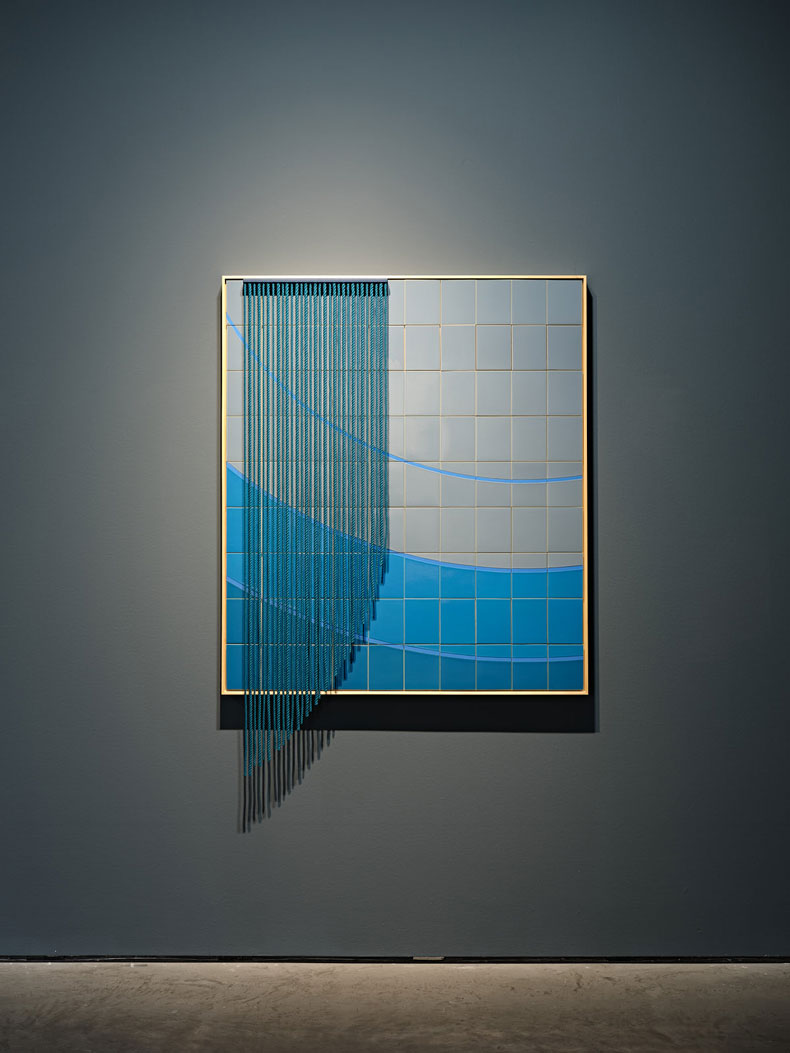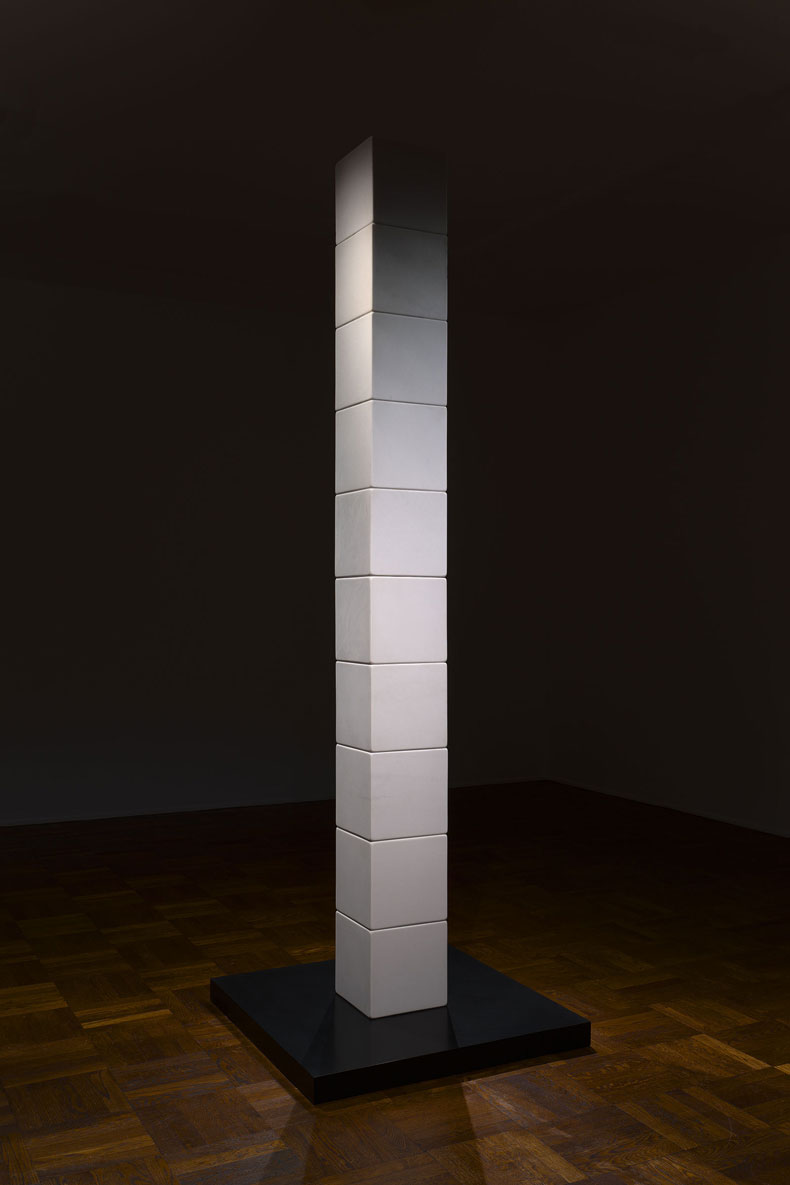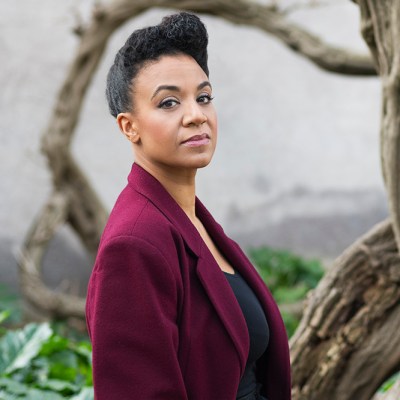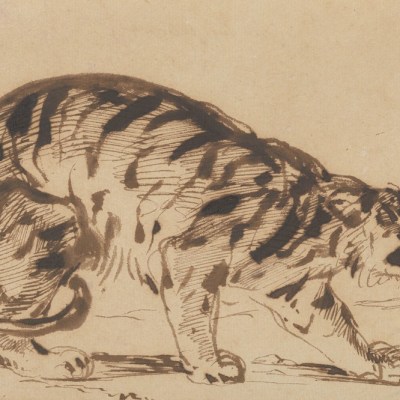With hundreds of exhibitions and events vying for attention in London during Frieze week, Apollo’s editors pick out the shows they don’t want to miss
Kapwani Kiwanga is not a name necessarily associated with sure-fire commercial artworks. Her thoughtful, heavily researched practice seems, in some ways, to be in defiance of commerciality. But as visitors to her Canadian pavilion at the Venice Biennale this year will know, her work is as strong from an aesthetic point of view as it is from an intellectual one. So it is rewarding to see a new series of wall-mounted works on show at Goodman Gallery. ‘Rudiments’ (until 6 November) continues the conversation Kiwanga is having about many favoured materials – rope, beads, gold – and advances the conversation in visually arresting form. Upstairs, the beads in luminescent purples and blues hanging in front of brushed metal seem attractive before considerations of exploitation and manufacture become apparent. Downstairs a series of works around tiles seem shinily enticing, luring the viewer into a world of extractive behaviour. Never have hidden systems of profit and economic abuse been so beguilingly explored.
Installation view of Cascade (2024) by Kapwani Kiwanga at Goodman Gallery, London. Photo: Jake Seal. Courtesy Goodman Gallery; © the artist

For something more purely playful you could do worse than visit Lyndsey Ingram’s newly opened second space in a beautifully restored Edwardian stable in Mayfair. On show is ‘Produce. Repeat.’, a collection of works by English artist Georgie Hopton (until 8 November). Hopton, who was born in North Yorkshire, has long been interested in nature and in this series of applied prints she produces delightfully abstracted versions of natural forms to create wallpaper, fabrics and prints using vegetables from her garden in upstate New York. The exhilaration of every child who has created a potato print is evident in these artfully simple works that resist the categorisations of what is and is not appropriate for a white-walled art gallery. There is something of a Bloomsbury sensibility blossoming here; it is a body of work that is pure pleasure.
Installation view of ‘Produce. Repeat.’ by Georgie Hopton at Lyndsey Ingram, 16 Bourdon Street, in 2024. Courtesy Lyndsey Ingram

A very different sort of pleasure is in evidence at the Courtauld Gallery. ‘Drawn to Blue: Artists’ use of blue paper’ arrives from the J. Paul Getty Museum with works by artists as varied as Tiepolo, Saenredam and Turner. Blue paper first appeared in North Italy in the mid 14th century and became a popular paper for artists across Europe by the mid 16th century. While blue paper is renowned for offering artists a mid tone that makes the exploration of light and dark particularly effective, considering the paper on its own terms raises fascinating questions of supply (how did this idea of paper made from blue rags travel across Europe?), use (why did it appeal to artists?) and innovation (how did it change artists’ practice?). The results of chalk on blue paper may be all the answer you need – the skill of the artists, the delicacy of the work and the beauty of the images make this an invaluable exhibition.
The Figure of Death (1987), James Lee Byars. Courtesy Michael Werner Gallery; © Estate of James Lee Byars

The performance artist and sculptor James Lee Byars (1932–97) is a fascinating figure. The first artist to be invited to visit the CERN laboratory in Geneva in 1972, he is best known as an almost shamanic figure whose work explores the idea of disposability. Byars is associated with two very different contemporaries: Joseph Beuys and the poet-turned-artist Marcel Broodthaers, who both took part in his performances. ‘Everyone is an Artist’ at Michael Werner Gallery presents work by all three and explores the connections between the artists and their work. In 1969 Byars staged one of his most important pieces: The Ghost of James Lee Byars, an empty, pitch-black room. How it was received by the viewer – as vacuous space, or a repository of past lives – depended on their disposition. Among all the crowds this week you could do worse than contemplate the meaning of emptiness, and Michael Werner Gallery is a very good place to start.


